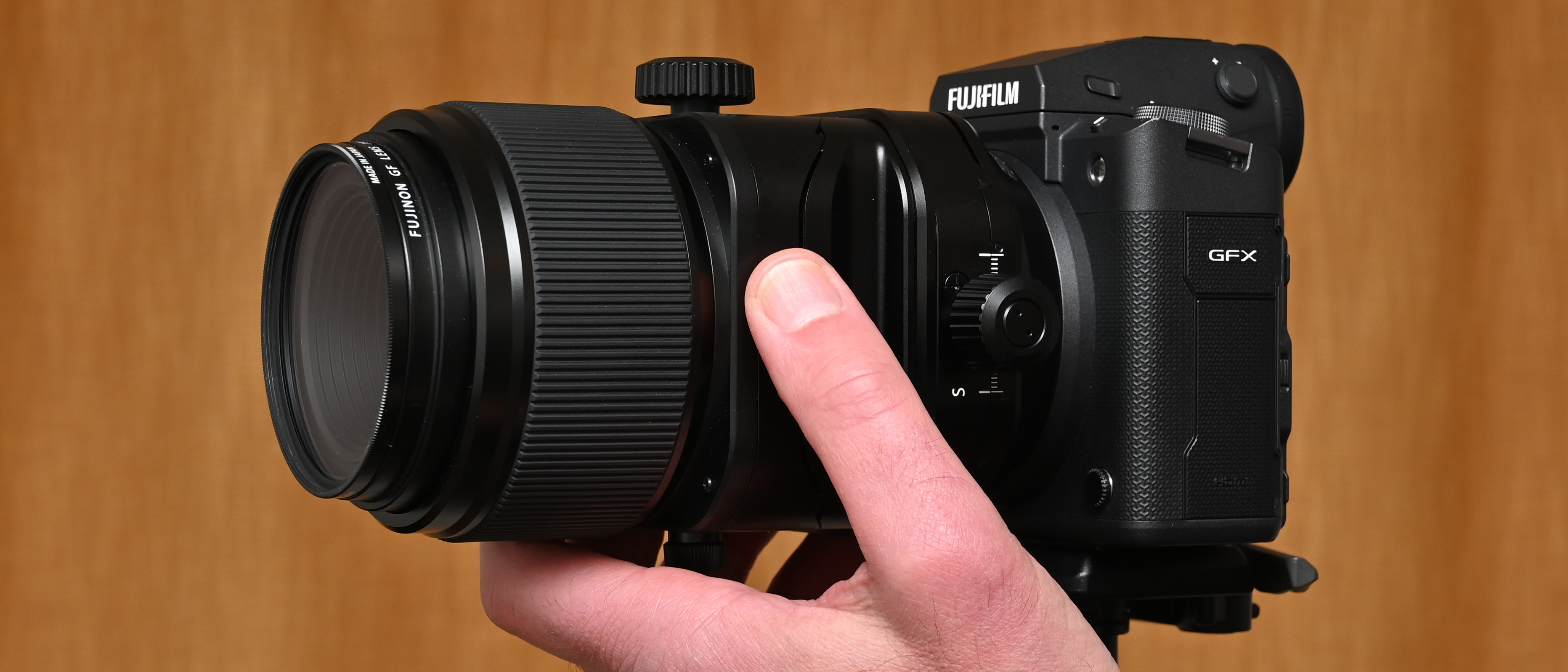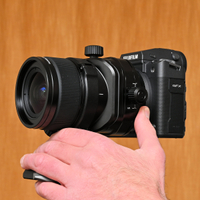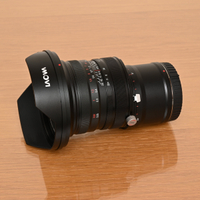Digital Camera World Verdict
I love the full control over perspective and depth of field that the Fujifilm Fujinon GF 110mm F5.6 T/S Macro gives me. Image quality is exceptional but it comes at a daunting purchase price.
Pros
- +
Full range of tilt, shift and rotation
- +
0.5x macro facility
- +
Exceptional image quality
Cons
- -
Quite weighty
- -
No tripod mounting collar
- -
Very expensive to buy
Why you can trust Digital Camera World
Tilt-shift lenses are the darlings of professional architectural and landscape photographers, enabling perspective correction to stop tall buildings appearing to lean inwards towards the top, and for gaining control over depth of field, largely independent of aperture settings. With these photo opportunities in mind, the best tilt-shift lenses are often wide-angle optics with a large field of view. The Fujinon GF 110mm F5.6 T/S Macro is even more of a specialist lens. Designed for Fujifilm’s GFX medium format system, it has an ‘effective’ focal length of just under 90mm in full-frame terms. As such, it’s more useful for product photography, still life and, thanks to its 0.5x maximum macro magnification factor, extreme close-ups. Whichever way you look at it, this is one of the best Fujinon GF lenses , full stop.

Fujinon GF 110mm F5.6 T/S Macro: What's changed?
Nothing’s really changed as this is one of a brace of brand new tilt-shift lenses for the medium format Fujifilm GFX system. The companion lens is the Fujinon GF 30mm F5.6 T/S, which gives the same field of view as using a 24mm wide-angle lens on a full-frame camera with a smaller image sensor. The GF 30mm lens comes complete with a tripod mounting ring and a hood, both of which are absent with the GF 110mm T/S. The only accessories you get are front and rear lens caps and a soft lens pouch.
Fujinon GF 110mm F5.6 T/S Macro: Specifications
| Mount options | Fujifilm GF |
| Lens construction | 11 elements in 9 groups |
| Angle of view | 27.9 degrees |
| Diaphragm blades | 9 |
| Minimum aperture | f/32 |
| Minimum focus distance | 0.43m |
| Maximum magnification | 0.5x |
| Filter size | 72mm |
| Dimensions | 95x149mm |
| Weight | 1,255g |
Fujinon GF 110mm F5.6 T/S Macro: Price & Availability
The lens is very new – so much so that at the time of writing this review, it was only available to pre-order from retailers stocking Fujifilm products. It comes with a price tag of £3,499/$3,499, making it very expensive for a tilt-shift lens but, then again, it needs to produce a much bigger image circle than a full-frame tilt-shift lens. That means wider-diameter glass elements that are more expensive to manufacture. By way of comparison, the Canon TS-E 90mm f/2.8L Macro lens costs around £2,439/$2,199, and the Nikon PC-E Micro-NIKKOR 85mm f/2.8D costs about £1,799/$1,977.
Fujinon GF 110mm F5.6 T/S Macro: Design & Handling
The GF 110mm feels a mighty chunk of lens and is really solidly built from metal parts. There’s no hint of plasticky construction here. Even so, it’s not quite as heavy as the GF 30mm T/S, weighing in at 1,255g. Handling is every bit as complex as I’d expect from a fully functional tilt-shift lens, with lots of control knobs and levers. As with other tilt-shift lenses, autofocus is off the menu so manual focusing can be the typical challenge if you generally rely on autofocus to do the job for you.
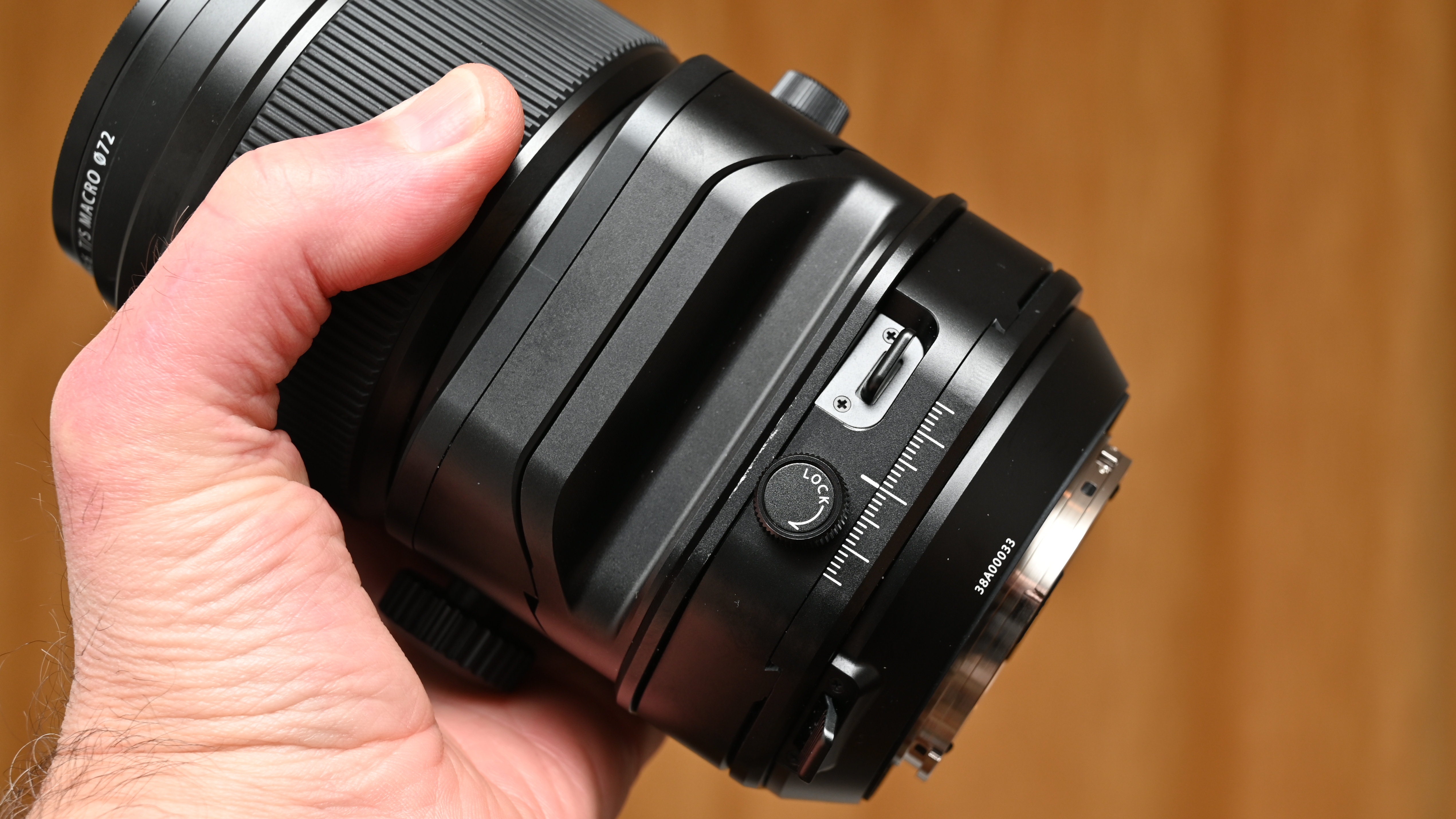
Control for creative effect benefits from a full range of adjustments. There’s a sizable +/-15mm of shift, and up to +/-10 degrees of tilt. Unlike with some older tilt-shift lenses, you can rotate the tilt/shift function through 90 degrees with a 45-degree click step, as well as rotating the lens on its mount through 90 degrees in both clockwise and counter-clockwise directions. That comes with 30-degree click step increments. The outcome is that you can use tilt or shift in any orientation to suit pretty much any shooting scenario.
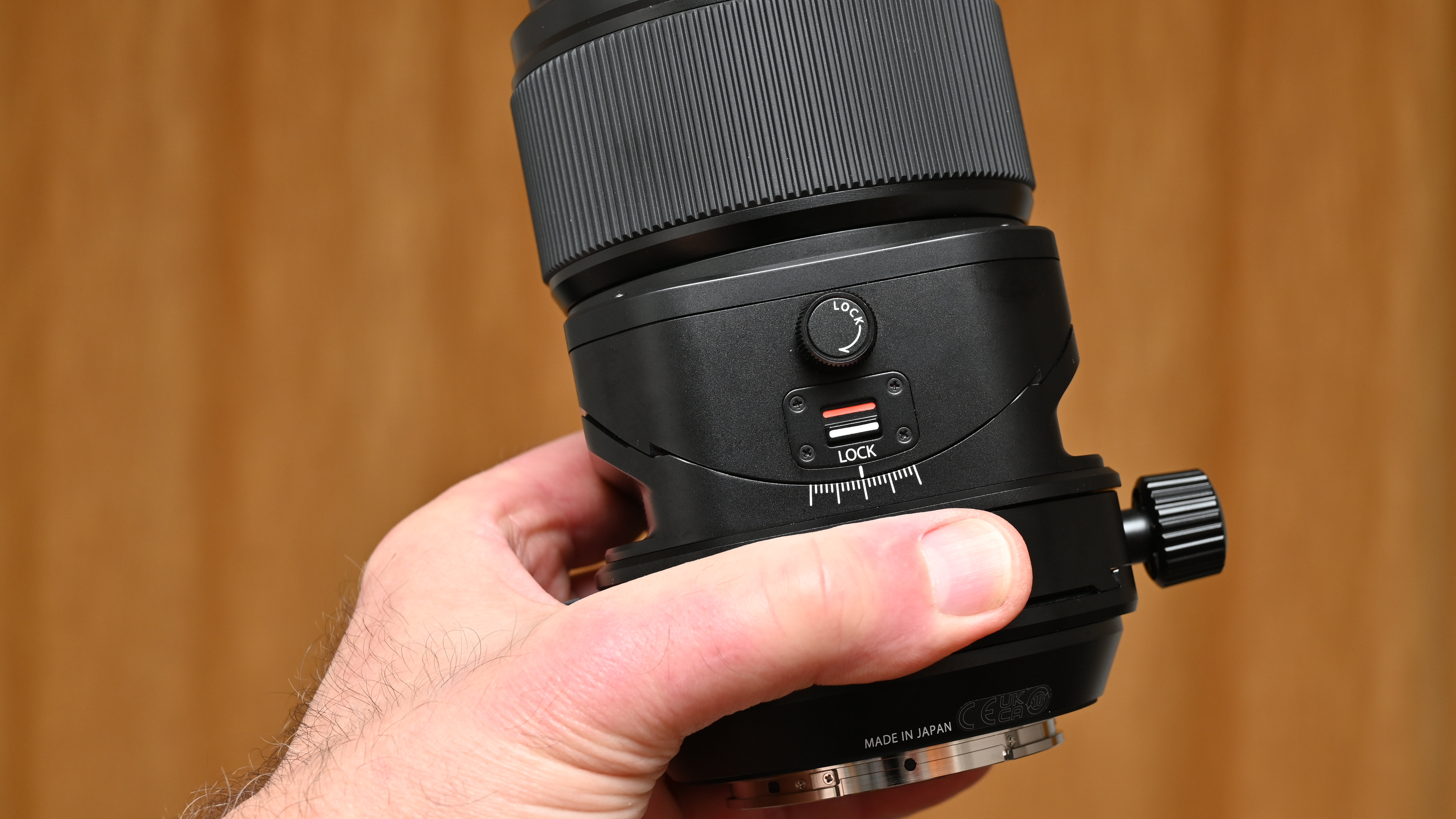
Locking screws for both tilt and shift mechanisms enable you to keep everything locked in place while shooting and, for making adjustments with the locking screws untightened, there are the typical adjustment knobs. An additional locking switch is featured for the tilt mechanism, to keep it fixed at its central position with zero tilt applied. Printed scales are on hand for easy reference, marked in increments of 1 degree for tilt and 1mm for shift. Unusually for a tilt-shift lens, positional adjustments are recorded in the EXIF data of images for reference.
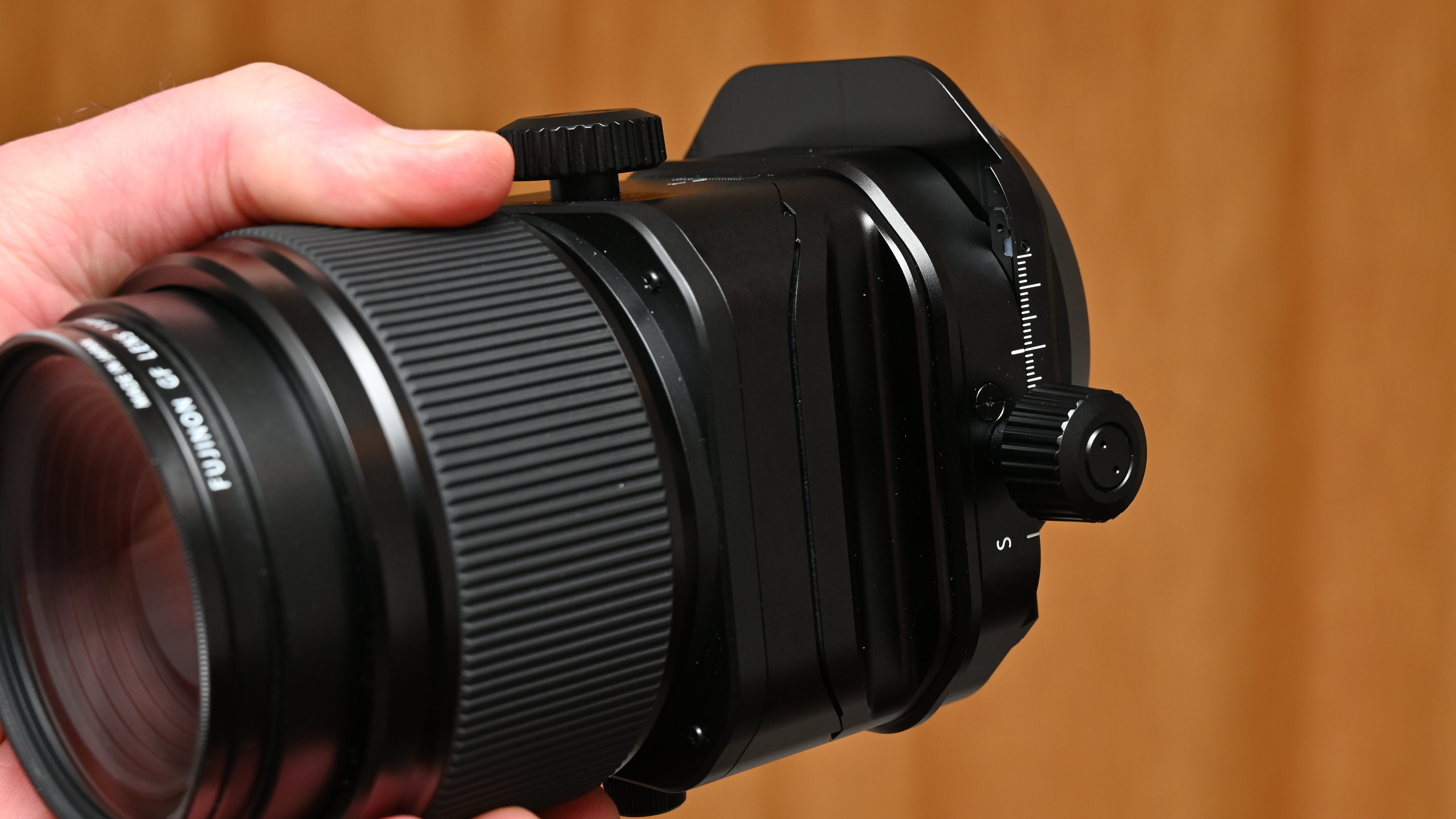
The optical design is based on 11 elements in 9 groups, which is simpler than the 16 elements in 11 groups of the sibling GF 30mm T/S lens. And whereas the latter incorporates three aspherical elements, two ED (Extra-low Dispersion) elements and one Super ED element, the GF 110mm T/S has one aspherical element and two ED elements, but no Super ED element.
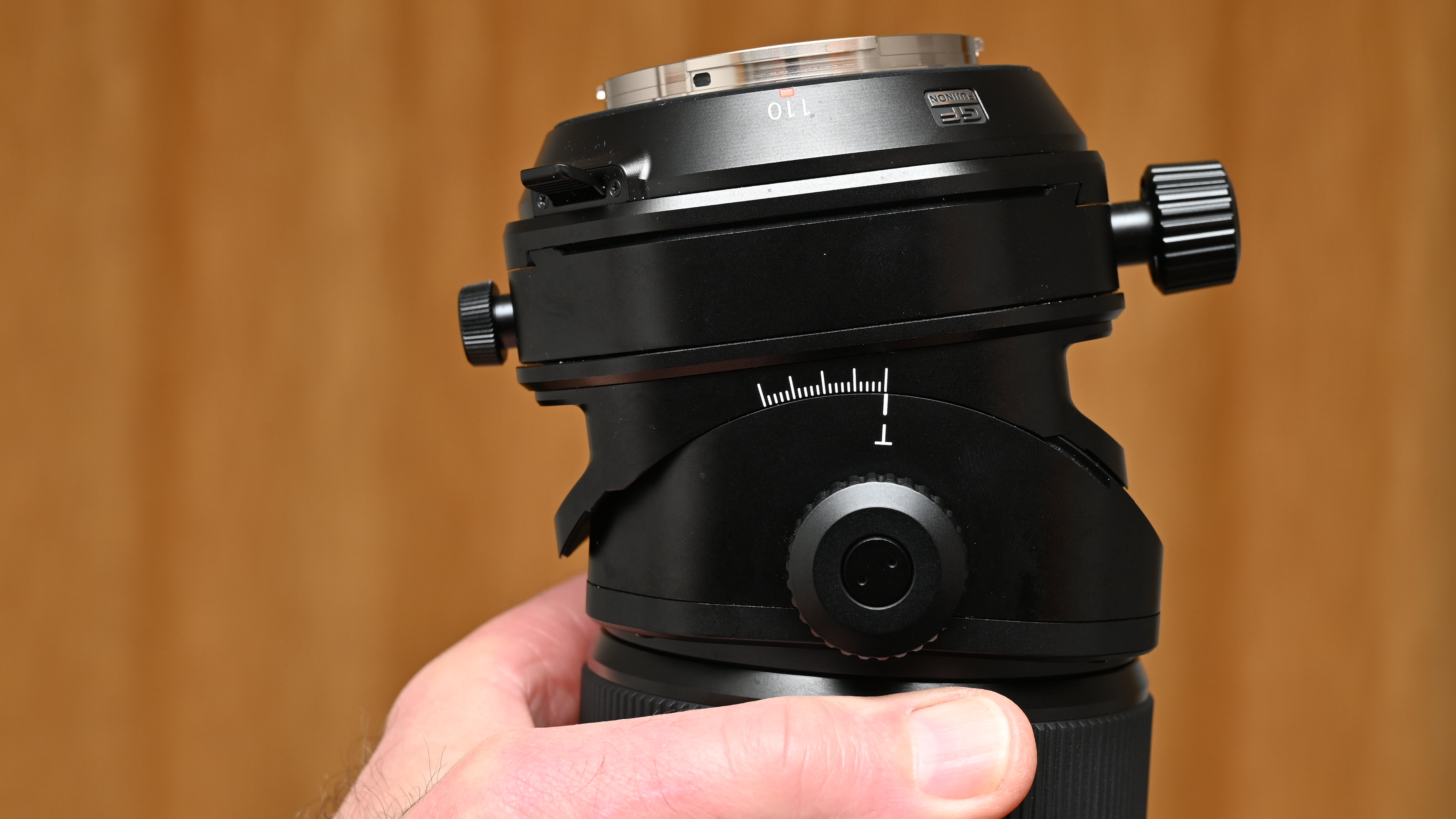
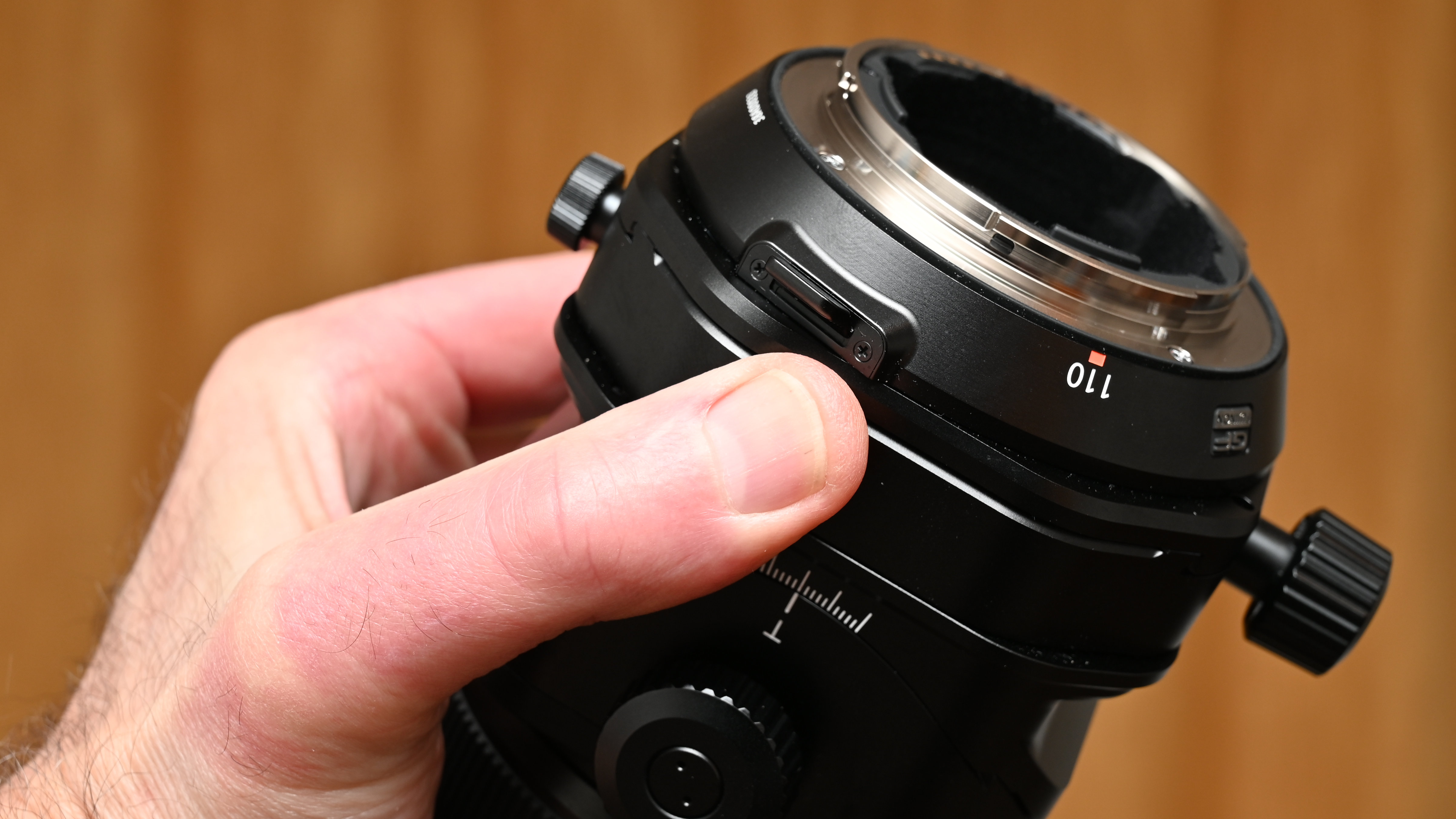
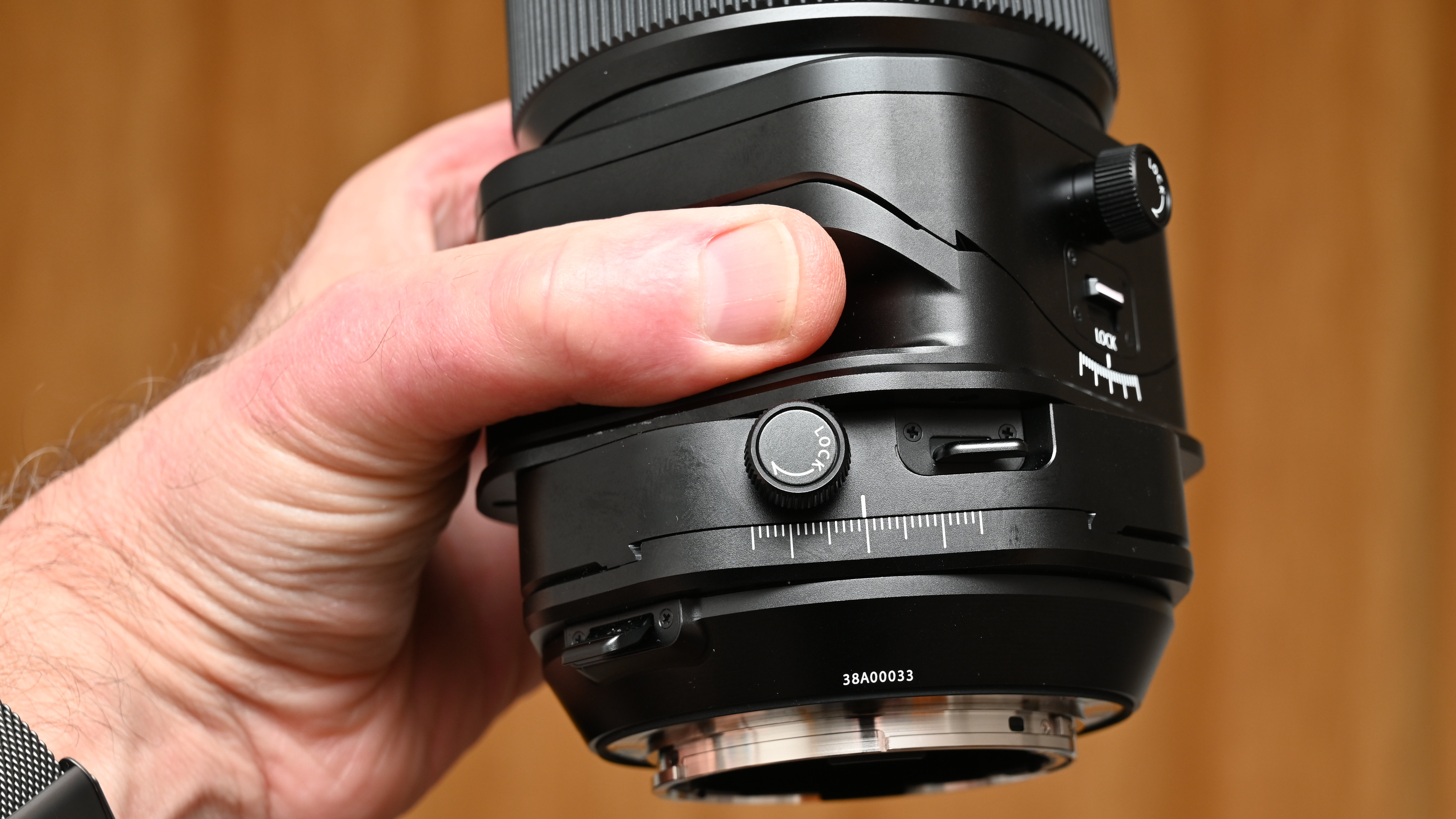
Fujinon GF 110mm F5.6 T/S Macro: Photo Performance
The more tilt or shift you apply, the more you’re likely to degrade image quality, because you’re utilizing the extreme outer section of the lens’s entire image circle. I’m very impressed that the this lens maintains superb levels of sharpness and clarity from its central configuration right out to the maximum extent of both tilt and shift adjustments, although the ‘in-focus’ area is naturally very selective when using tilt in the necessary direction for minimum depth of field, where you can pick out the area you want to be sharp with manual focusing. Vignetting is also minimal even with tilt or shift taken to their maximum positions, which is no mean feat considering the relatively large medium format image sensor of the host camera.
Testing the lens with a Fujifilm GFX 100 II I found that precise manual focusing was a little tricky. Perhaps I rely too much on autofocus these days, which is unavailable with tilt-shift lenses. The ‘focus peaking’ facility and other manual focus aids of the host camera body can help to some extent but, for real precision, I generally resorted to a magnified preview facility, and kept a constant check on the results with maximum magnification in playback mode after each shot. In a nutshell, it's a razor-sharp lens but it pays to be precise, especially when making the most of a medium format camera with a 102 megapixel image sensor.
Fujinon GF 110mm F5.6 T/S Macro: Sample Images





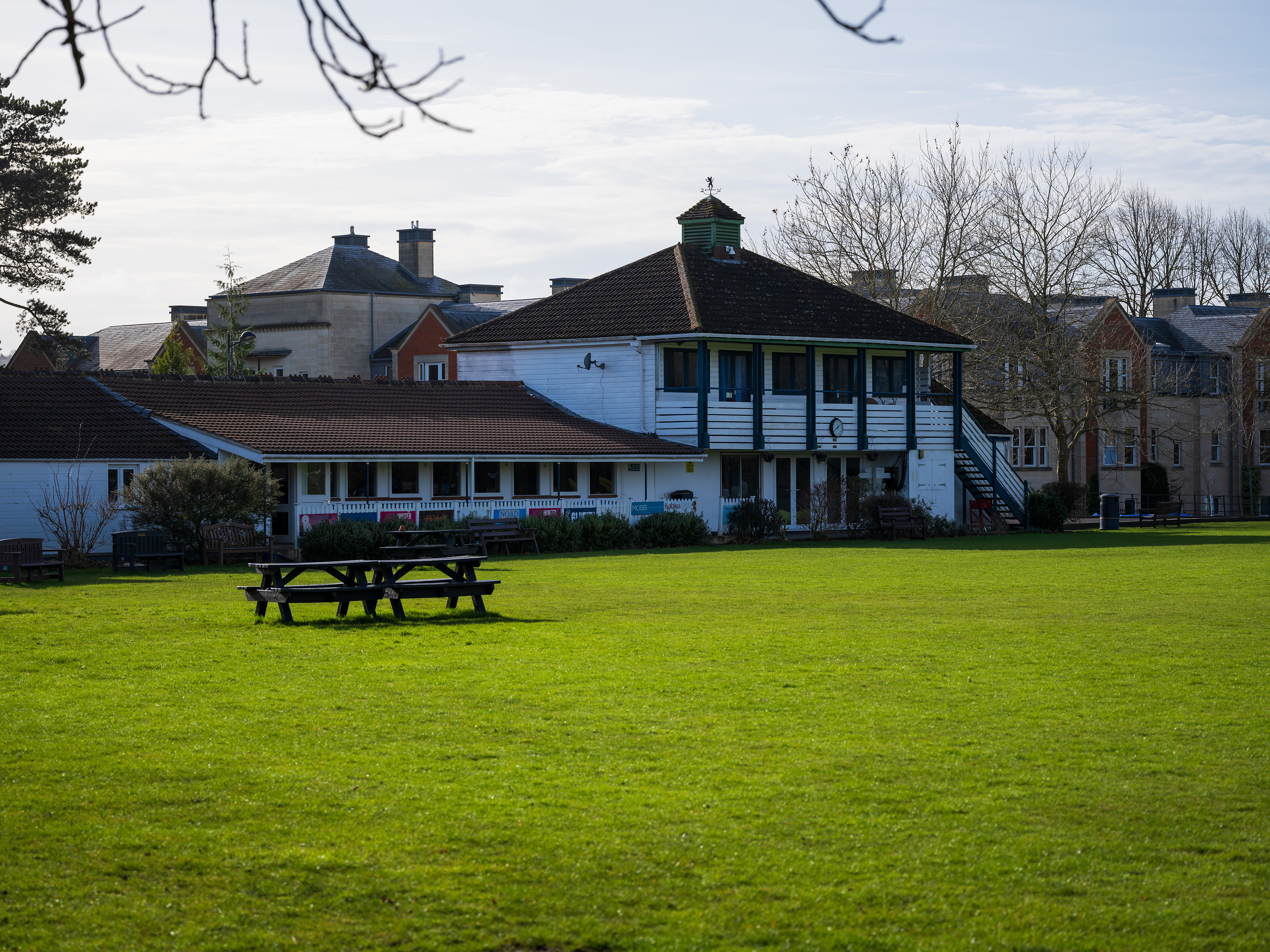
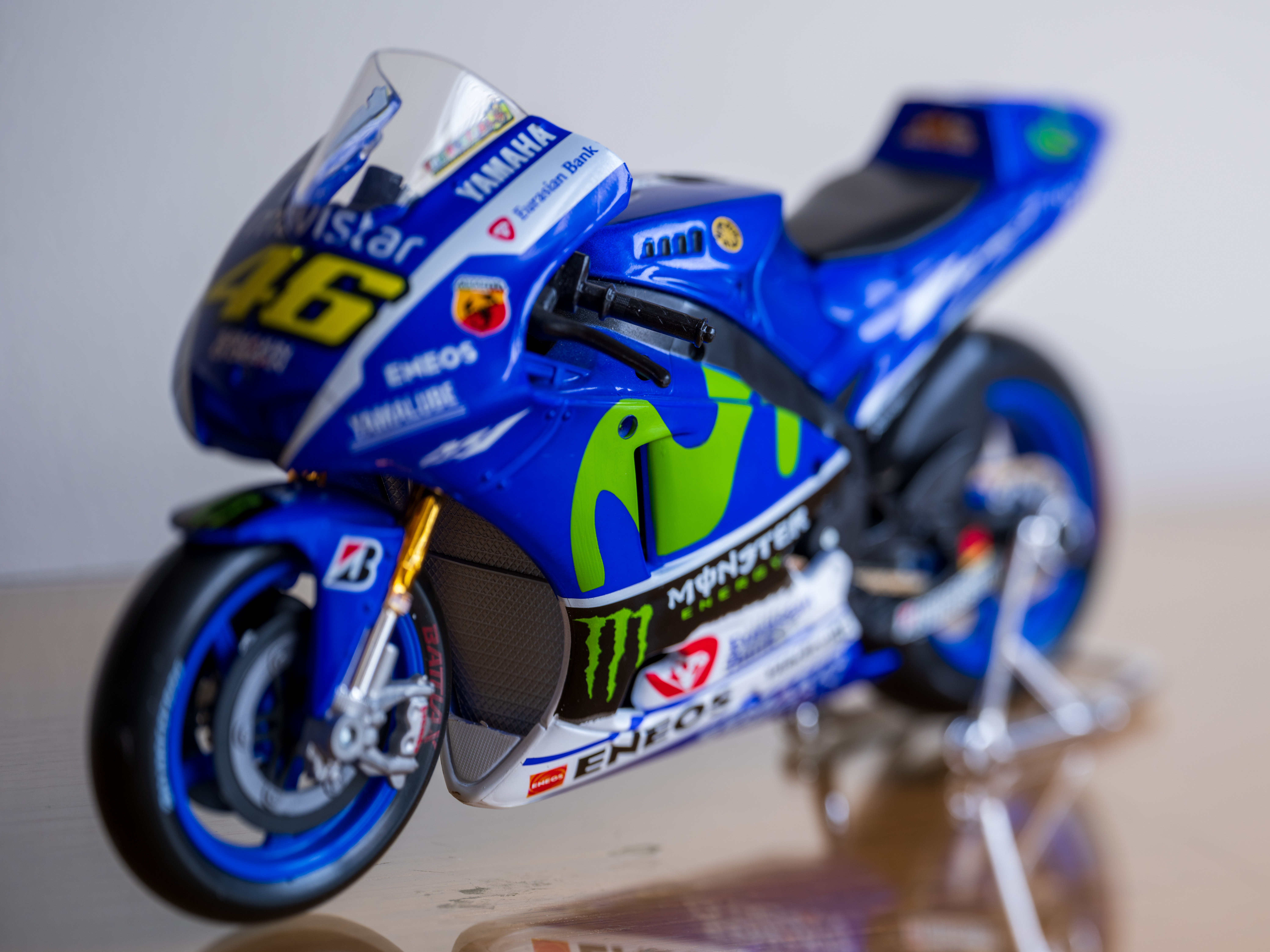
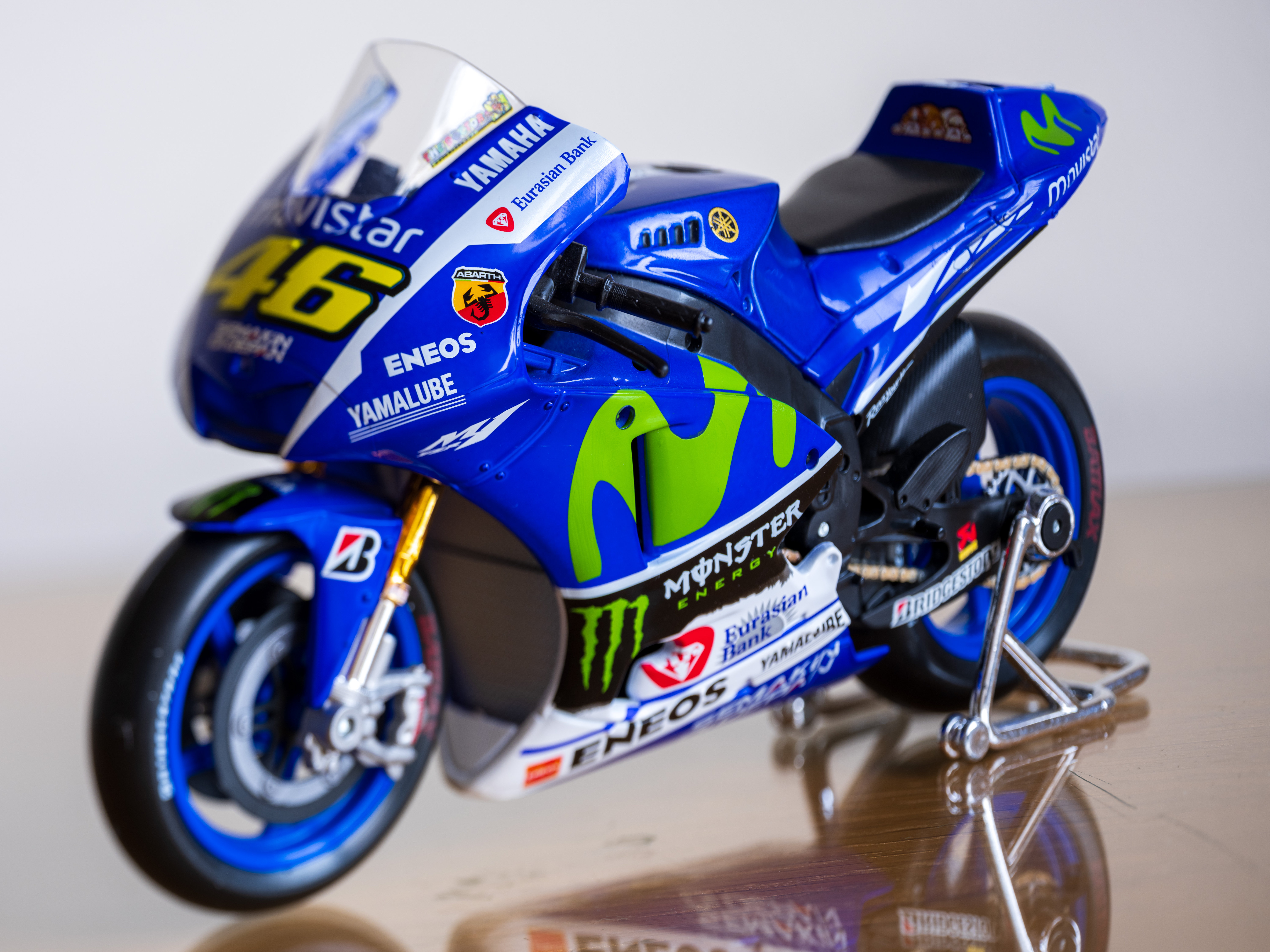
Fujinon GF 110mm F5.6 T/S Macro: Lab Results
We run a range of lab tests under controlled conditions, using the Imatest Master testing suite. Photos of test charts are taken across the range of apertures and zooms (where available), then analyzed for sharpness, distortion and chromatic aberrations.
We use Imatest SFR (spatial frequency response) charts and analysis software to plot lens resolution at the center of the image frame, corners and mid-point distances, across the range of aperture settings and, with zoom lenses, at four different focal lengths. The tests also measure distortion and color fringing (chromatic aberration).
Sharpness:
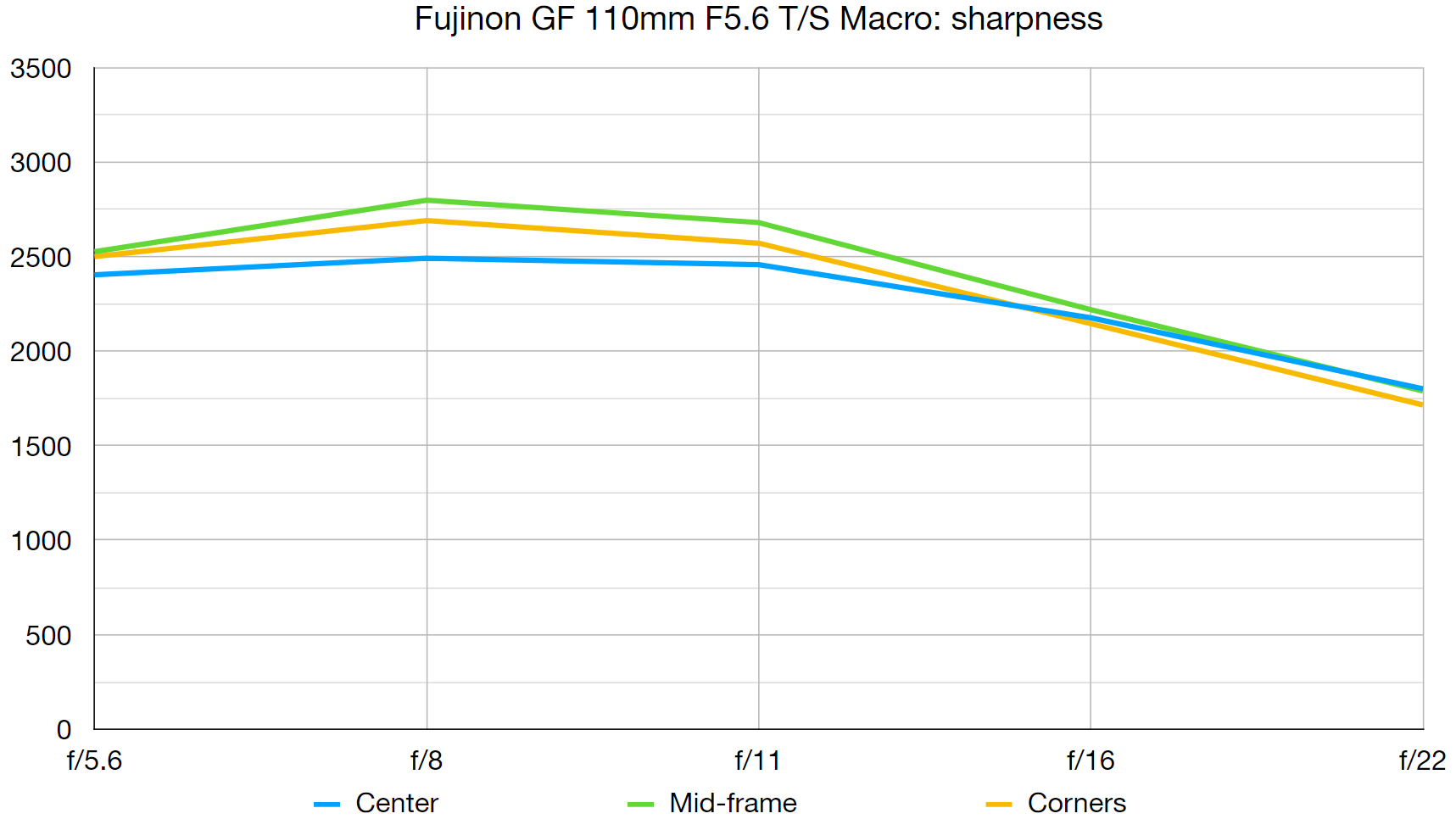
Supreme center-sharpness isn’t quite as off the scale as with the companion GF 30mm F5.6 TS lens but it’s still pretty epic. What’s more, levels of sharpness are remarkably consistent across the entire image frame, right out to the edges and corners. And that remains true when taking tilt or shift to the outer limits.
Fringing:
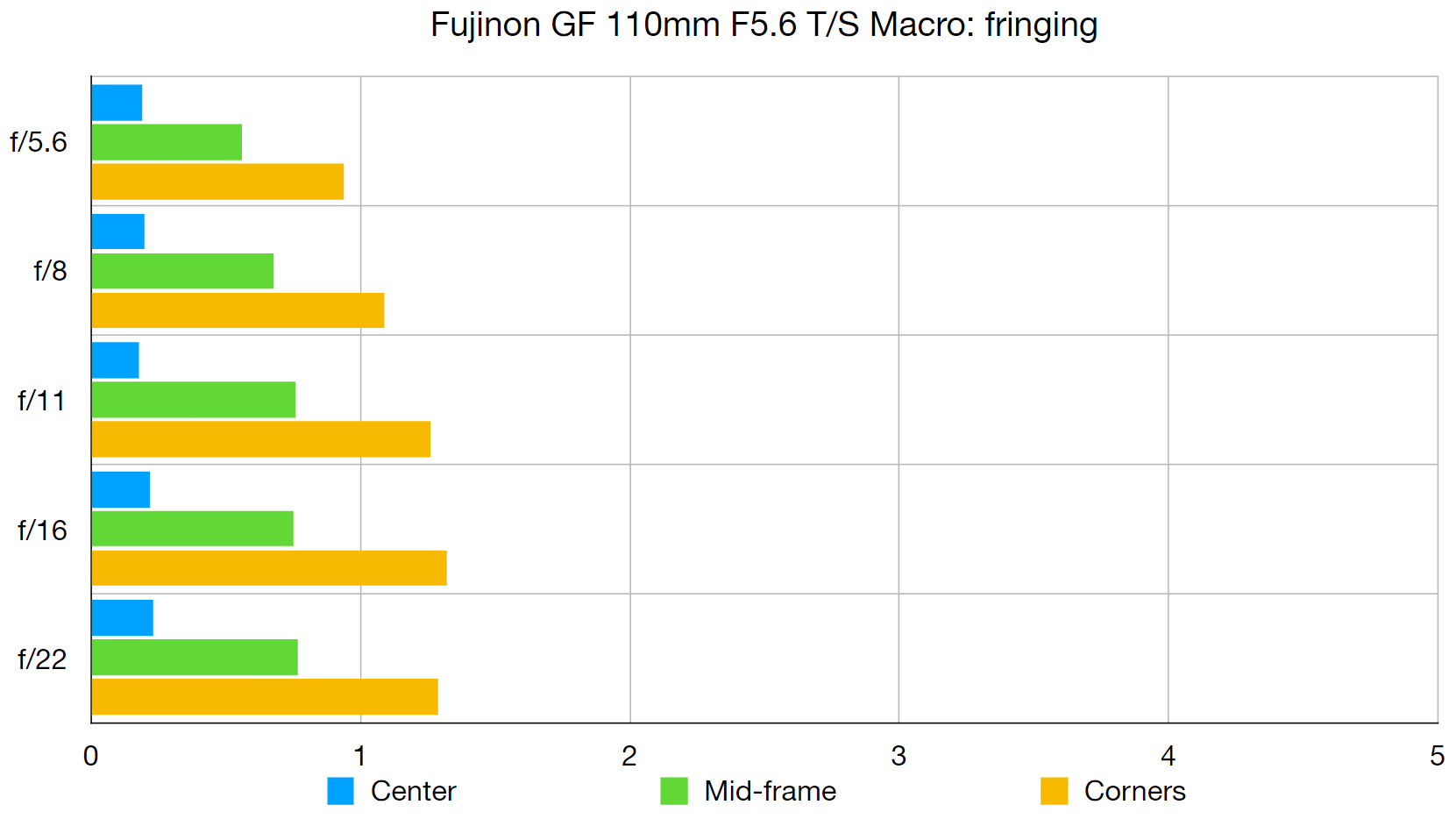
There’s a touch of lateral chromatic aberration towards the edges and corners of the frame, throughout the aperture range. Even so, it’s very slight and automatic correction can rule it out altogether.
Distortion: -0.08
Technically, there’s an extremely slight amount of barrel distortion but it’s virtually impossible to spot in real-world shooting.
Fujinon GF 110mm F5.6 T/S Macro: Verdict
There’s a bit of a learning curve with any tilt-shift lens if you’re not accustomed to the breed. Once you’re up to speed with the basics, however, the Fujinon GF 110mm F5.6 T/S Macro is a joy to use. I found all the controls intuitive, sensibly placed and easy to use. Handling is very refined and the lens feels beautifully built. There’s plenty of scope for correcting perspective and altering depth of field. More importantly, the lens maintains absolutely superb image quality even at the extremes of its tilt and shift movements. The ‘effective’ 87mm focal length in full-frame terms makes this lens even more of a specialist item than a wide-angle tilt-shift lens but it performs excellently and justifies its extravagant asking price.
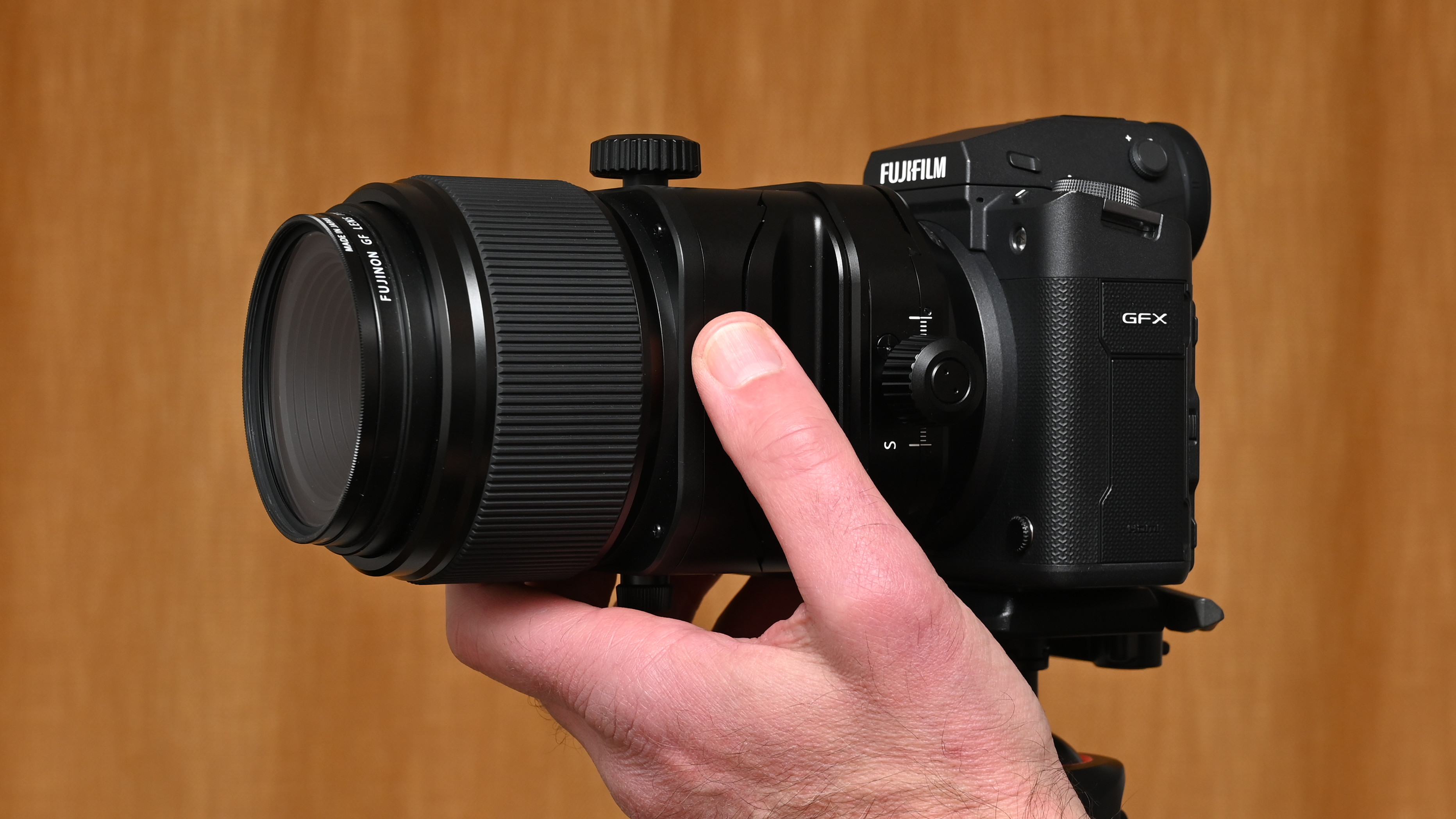
Should you buy the Fujinon GF 110mm F5.6 T/S Macro?
✅ Buy this...
- Full tilt, shift and rotation
- 0.5x macro magnification
- Superb image quality
🚫 Don't buy this...
- Expensive for its type
- Effects can be mimicked when editing
- A wide-angle T/S lens might be preferable
Alternatives
The wide-angle Laowa FF S 20mm F4.0 C-Dreamer only costs about a third of the price. It’s a lens that I’ve been very impressed with but it only offers a shift function, with no tilt option.
Matthew Richards is a photographer and journalist who has spent years using and reviewing all manner of photo gear. He is Digital Camera World's principal lens reviewer – and has tested more primes and zooms than most people have had hot dinners!
His expertise with equipment doesn’t end there, though. He is also an encyclopedia when it comes to all manner of cameras, camera holsters and bags, flashguns, tripods and heads, printers, papers and inks, and just about anything imaging-related.
In an earlier life he was a broadcast engineer at the BBC, as well as a former editor of PC Guide.

